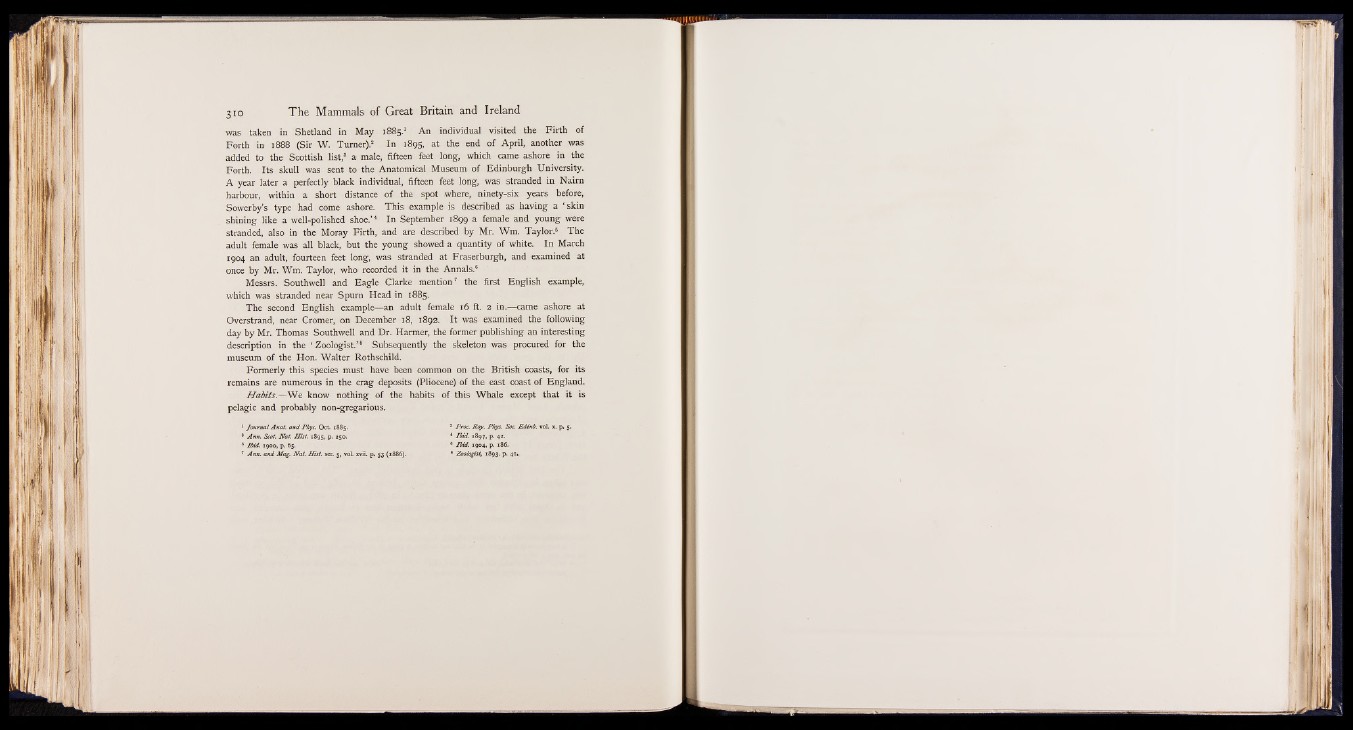
310 The Mammals of Great Britain and Ireland
was taken in Shetland in May 1885.1 An individual visited the Firth of
Forth in 1888 (Sir W. Turner).2 In»i895, at the end of April, another was
added to the Scottish list,“ a male, fifteen feet long, which came ashore in the
Forth. Its skull was sent to the Anatomical Museum of Edinburgh University.
A year later a perfectly black individual, fifteen feet long, was stranded in Nairn
harbour, within a short distance of the spot where, ninety-six years before,
Sowerby’s type had come ashore. This example is described as having a ‘ skin
shining like a well-polished shoe.’ 1 In September 1899 a female and young were
stranded, also in the Moray Firth, and are described by Mr. Wm. Taylor.“ The
adult female was all black, but the young showed a quantity of white. In March
1904 an adult, fourteen feet long, was stranded at Fraserburgh, and examined at
once by Mr. Wm. Taylor, who recorded it in the Annals.6
Messrs. Southwell and Eagle Clarke mention7 the first English example,
which was stranded near Spurn Head in 1885.
The second English example— an adult female 16 ft. 2 in.— came ashore at
Overstrand, near Cromer, on December 18, 1892. It was examined the following
day by Mr. Thomas Southwell and Dr. Harmer, the former publishing an interesting
description in the ‘ Zoologist.’ 8 Subsequently the skeleton was procured for the
museum of the Hon. Walter Rothschild.
Formerly this species must have been common on the British coasts, for its
remains are numerous in the crag deposits (Pliocene) of the east coast of England.
Habits.—We know nothing of the habits of this Whale except that it is
pelagic and probably non-gregarious.
1 Journal Anal, and Phys. Oct. 1885. * Proc. Key. Phys. Sac. Edinb. vol. x. p. 5.
3 Ann. Scot. Nat. H ist. 1895, p. 250. 4 Ibid. 1897, p. 42.
3 Ibid, igoo, p. 65. 6 Ibid. 1904, p. 186.
7 Ann. and Mag. Nat. H ist. ser. 5, vol. xvii. p, 53 (1886). 8 Zoologist, 1893, p. 41»